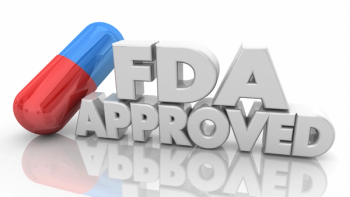TrumpRx and the Dawn of Direct-to-Consumer Commercialization
Key Takeaways
- TrumpRx enables direct drug purchases from manufacturers, reducing prices and bypassing traditional pharmacy channels, enhancing patient access and communication.
- The DTC model aligns with Most-Favored-Nation pricing, aiming to close the US drug price gap with other high-income countries.
The model imagines a new future in which traditional pharmacy distribution and access channels are bypassed.
In a year marked by an avalanche of unprecedented healthcare policy developments, the announcement of TrumpRx, a direct-to-consumer (DTC) drug distribution channel, is a defining moment for the pharmaceutical industry. The model imagines a new future in which traditional pharmacy distribution and access channels are bypassed and patients can order products directly from manufacturers at a potentially lower price.
More than a distribution platform, the DTC channel opens a new avenue for communicating with patients, including those who have been historically underserved or face complex barriers.
The distribution model opens a new chapter in our journey to reach every patient possible. It marks the precipice of a new era of DTC commercialization, in which communication goes hand-in-hand with the delivery of drugs. Beyond providing access to medicines, manufacturers have a new opportunity to transform the brand experience and create new touchpoints that drive meaningful connections with patients.
One thing is clear––this is not a time for siloed thinking, and manufacturers need to be ready.
The DTC channel, unpacked
On September 30, the Trump administration announced a new government-facilitated platform, TrumpRx, that enables consumers to purchase prescription drugs directly from manufacturers at significantly reduced prices.
The DTC distribution channel is a vital part of the administration’s focus on Most-Favored-Nation (MFN) pricing, aimed at closing the gap between drug prices in the US and other high-income countries. It differs from the government’s potential plans to restrict biopharmaceutical advertising. However, the two announcements cannot be viewed in isolation. The push and pull of both political moves will directly impact how brands interact with patients.
Pfizer will be exempt from pharmaceutical tariffs for the next three years, providing it continues to invest in US manufacturing. Several other biopharmaceutical companies quickly followed suit, announcing similar deals with the administration.
The DTC model has emerged at a time when manufacturers are facing potential restrictions on mass multimedia and multi-media advertising, tariffs, and demands to cut prices.
It’s easy to see these changes as restricting the way we interact with patients. However, if we look beyond the policies, an opportunity emerges. We have the chance to upgrade the way we communicate, bringing together marketing, access, policy, direct-to-consumer, and patient advocacy to revolutionize the way we reach patients.
The dawn of DTC commercialization
The emergence of TrumpRx could quickly lead to a growth in competing direct-to-consumer channels created by numerous manufacturers. Capitalizing on the opportunity of the platform will require an interoperative approach that brings together distinct expertise across the product lifecycle.
Marketing, Policy, and Market Access teams will need to collaborate on a deeper level than ever before to navigate the impact on a vast network of stakeholders. Payers, healthcare professionals, and patients will all need support to understand the new channel. The program could transform distribution and benefit models and will also intersect with existing pharmacy benefit manager practices.
Cross-functional teams will need to unite to determine the digital tools to integrate, redefine patient services, and develop brand support programs tailored to more proactive, digitally engaged consumers.
Key strategic questions must be answered, incorporating perspectives from teams across the product lifecycle, including:
- Which products will viably work under this new framework?
- What patient populations are most likely to benefit, and will the channel truly improve access for underserved populations?
- How will this impact existing access, affordability, and adherence programs?
- How will the model change healthcare professional and pharmacist engagement?
- What opportunities can manufacturers leverage to create more personalized, relevant communications that reach every patient possible?
We are seeing firsthand how DTC programs could disrupt the landscape, including the vital importance of internal collaboration for preempting stakeholders’ needs across the healthcare ecosystem.
A personalized future
For the past 30 years biopharma patient marketing plans relied heavily on branded TV advertising.While the industry has broken into omnichannel marketing and personalization, the TV ad has remained core to marketing strategies.
It remains to be seen if the administration will truly crack down on TV advertising. However, it’s clear that the foundation of many organizations’ marketing approaches has been shaken. In today’s healthcare landscape, personalization will be king.
A novel direct-to-patient distribution channel empowers marketers to build personalization from the ground up, intertwining information on distribution with tailored support. This approach unites distribution and DTC engagement in a way that is akin to a consumer brand, with communications continuing long after an initial purchasing decision is made.
By ensuring the platform becomes an essential part of an omnichannel strategy, marketers can create more meaningful and relevant engagements that build trust and brand affinity.
Reaching every patient possible
Engagements with TrumpRx from major pharmaceutical companies are a signal to the market: this isn’t a theoretical exercise.
Early adopters will have a unique opportunity to shape the operational and regulatory frameworks of this still-developing channel and create deep, valuable, and long-standing relationships with patients.
To take full advantage of these opportunities—and mitigate potential risks— biopharmaceutical companies need to act now. Manufacturers cannot afford to wait for comprehensive details from the Trump administration. During this early period, it is essential for Market Access, Medical, and Marketing teams to work together to uncover opportunities to reach, empower, and engage every patient possible.
Newsletter
Lead with insight with the Pharmaceutical Executive newsletter, featuring strategic analysis, leadership trends, and market intelligence for biopharma decision-makers.





